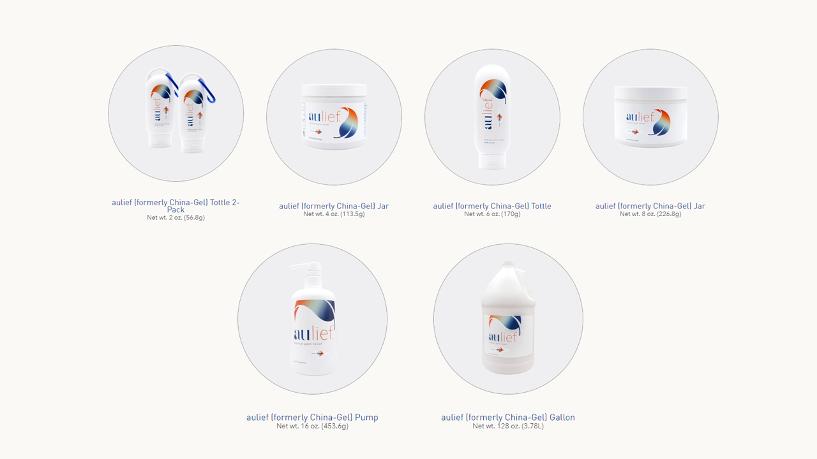Topical Pain Relief Creams, Gels, and Rubs: What Works Best for You?

China-Gel is a natural, unique herbal formula developed by a chiropractor, Dr. Paul Tullio. A glideless therapeutic gel that incorporates modern technology with the ancient pain-relieving concepts of Chinese medicine, China-Gel is recommended by medical professionals for its long-lasting pain relief. It contains 7 herbal ingredients (menthol, camphor, lavender, angelica, ginseng, aloe vera, and witch hazel).
Topical gels are a popular form of medication because they are easy to apply and can be absorbed quickly through the skin. Here are some popular options and what you need to know if you'd like to give them a try.
Analgesic Creams, Rubs, and Sprays
- Topical painkillers, or analgesics, are sprayed on, rubbed in, or applied as patches onto the skin over painful muscles or joints. Even though all are designed to make the pain disappear, different active ingredients are used to make different products. Here are some of the most common.
- Stimulants such as menthol, methyl salicylate (oil of evergreen), and camphor are called counterirritants because they cause a burning or cooling sensation which distracts the mind from the pain. China-gel is a good example.
- Salicylates. The same ingredients in most aspirin that alleviate the effects of pain end up in various creams. When absorbed into the skin, they can help relieve pain in particularly sensitive skin areas, such as the fingers, knees, and elbows.
- Prescription NSAIDs. Topical forms of nonsteroidal anti-inflammatory drugs have fewer side effects associated with oral NSAIDs, like stomach upset and bleeding. Do not use these medications if you are also taking oral NSAIDs.
- Capsaicin The main ingredient of hot chili peppers, capsaicin is also one of the most effective active substances for the management of joint pain and diabetic nerve pain. When capsaicin is applied, it can cause a tingling or burning sensation. This will gradually subside with time. You might need to apply these creams for a number of days up to a number of weeks before you notice pain relief.
- Lidocaine. This medicine numbs the pain. It comes in the form of ointment or gel that is applied to the painful area. Talk to your doctor first if you have liver problems or take heart rhythm drugs.
Here's what you need to know to get the greatest effects and minimize the risks of these products:
- Follow the package insert's directions thoroughly. Save its contents to refer to later.
- Avoid applying them onto wounds or damaged skin.
- Do not use them with a heating pad because you could sustain a burn.
- Do not use them under a tight bandage.
- Wash your hands thoroughly once you have used them, or wear gloves. Avoid touching your eyes and genital areas with any of the products in your hands.
- If you are allergic to aspirin or are taking blood thinners, consult your doctor before using topical medications with salicylates.
Hot Packs and Cold Packs
At times hot or cold packs -- or even a combination of both -- can be helpful for providing relief for sore muscles and joints.
Cold can reduce pain and swelling by constricting the flow of blood to the injured area. It is especially useful for the pain and swelling of an arthritis flare, sprained ankle, or any other type of injury. Cold reduces inflammation and swelling by restricting blood flow to the injured area.
You can apply cold using a commercial cold pack like Elastogel all-purpose pack or a water bottle filled with ice and cold water.
You can also use items already in your home such as:
- Zippable plastic freezer or storage bags filled with ice and water
- A washcloth or hand towel dipped in cold water and ice
- A bag of frozen vegetables, such as peas or corn
Heat soothes your muscles, which dilates your blood vessels and increases blood flow. The heat also diminishes your level of discomfort. You can apply heat with commercial heat packs, heating pads, or hot water bottles. Other ways to use heat include:
- Soaking in a hot bathtub
- Standing under a hot shower
- Soaking a washcloth or hand towel in warm water then applying to painful joints or muscles
To get the most relief from hot or cold without damaging your skin, try these tips:
- Use either heat or cold for only 15-20 minutes at a time and make sure to test the temperature before application.
- Place a towel between your skin and the cold or heat source.
- Don't use heat or cold on skin with open cuts or sores.
- Be particularly careful around heating pads, which can cause significant burns if they are too hot or if you leave them on for too long.
Pain is a common experience. It can be caused by injuries, illness, or everyday activities. There are many ways to get relief from pain. For more details about the products we offer, you can check our website Pro Therapy Supplies, or give us a call at 770-441-9808.

